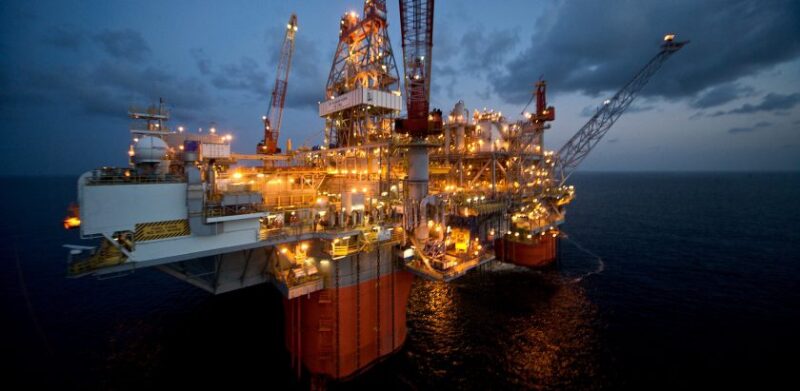As it turns out, the COVID-19 pandemic that began more than 2 years ago has not resulted in peak oil demand.
This runs counter to one of the biggest predictions made by BP in its Energy Outlook 2020 (published in September 2020) which said the world’s thirst for crude oil and other liquid fuels topped out at around 100 million B/D in 2019.
That forecast assumed that global gross domestic product (GDP) was on track to fall from 2019 levels by 2.5% in 2025. But in its latest report—Energy Outlook 2022—the London-based supermajor sees global GDP down by just 1.5% in 2025.
According to BP, the economic toll of the pandemic “looks set to be less severe than previously anticipated, pointing to a stronger-than-expected outlook for energy demand and carbon emissions in the near term.”
In addressing what some consider to be another black swan event, BP notes that its new outlook was largely prepared prior to the Russian invasion of Ukraine which has driven global energy prices higher and cast an uncertain shadow over Russia’s oil and gas sector in recent weeks.
That said, BP offers three scenarios that all foresee oil demand surpassing pre-pandemic levels by the middle of this decade before slipping to varying degrees.
The most bullish case for oil, called the “new momentum” scenario by BP, projects that crude demand will rise to 101 million B/D in 2025 and remain flat into 2030. After that point, global demand retreats to 98 million B/D by 2035 and to 92 million B/D by 2040.
The “net-zero” scenario, which is the most aggressive in terms of global climate ambitions being achieved, pegs 2025 demand at 98 million B/D and just 75 million B/D by 2035. For the net-zero predictions to come true, BP assumes that a 95% reduction in greenhouse-gas (GHG) emissions must be achieved.
In the middle is BP’s “accelerated” scenario that assumes the world will still be broadly in line with climate goals but with a 75% reduction in GHG emissions by 2025. This picture of the future suggests that oil demand will be around 96 million B/D in 2025 and 85 million B/D a decade later.
Gas Demand Depends on Asia
Often seen as a bridge fuel, natural gas demand will continue to rise throughout the decade per BP’s scenarios. It is in the 2030s where the scenarios begin to diverge significantly.
In the new momentum case, annual demand rises by nearly 30% over the next 30 years. This translates to an increase from 2019's global consumption of 3900 Bcm (138 Tcf) to 5020 (177 Tcf) by the end of the forecast period in 2050.
In this case for ever-rising demand, BP sees China’s efforts to switch from coal to gas as the chief driver followed by the rise of India’s gas-to-power sector and that of other emerging Asian economies.
However, if the world keeps up with its most ambitious net-zero carbon emission goals, then BP forecasts annual demand for gas peaks at 4128 Bcm (145 Tcf) in 2025 before falling by about 60% in 2050. By comparison, the mid-range case only sees gas demand dropping by about 35% from current levels to 2050.
BP notes that its net-zero scenario relies on a sharp decrease in natural gas use across industry and in the building sector. It also depends on a sharp uptick in renewable power sources and sees the only major driver for increased demand coming from using natural gas to produce blue hydrogen. This would require a major boom in steam-methane reformation facilities.
For demand destruction to take shape over the next 10 years for both oil and gas, BP says that renewable energy (e.g., wind, solar, and geothermal systems) must increase its share of the global primary energy supply from 10% in 2019 to 55–65% in 2050.
Counting on Electric Vehicles
How close BP’s forecasts on oil demand come to reality also depends in large part on how quickly the world’s transportation sector evolves.
“The dominant factor in reducing oil consumption in road transport over the first part of the outlook is the continuing improvement in vehicle efficiency, especially of passenger cars,” the report reads.
In all of its scenarios, BP foresees vehicle fuel efficiency representing between 60% and 70% of the reductions in oil demand for the road transport sector.
The predictions also hinge on the adoption rate of electric vehicles (EVs).
BP estimates that in 2020, EVs accounted for less than 1% of all the kilometers/miles traveled on the world’s roads and highways.
For oil demand to peak at 101 million B/D, as is called for in the new momentum scenario, that share must rise to 3% in 2025 and then soar to more than 40% in 2050. In BP's accelerated and net-zero scenarios, this figure, respectively, rises to 66% and 80%.
Access the entire report here.


